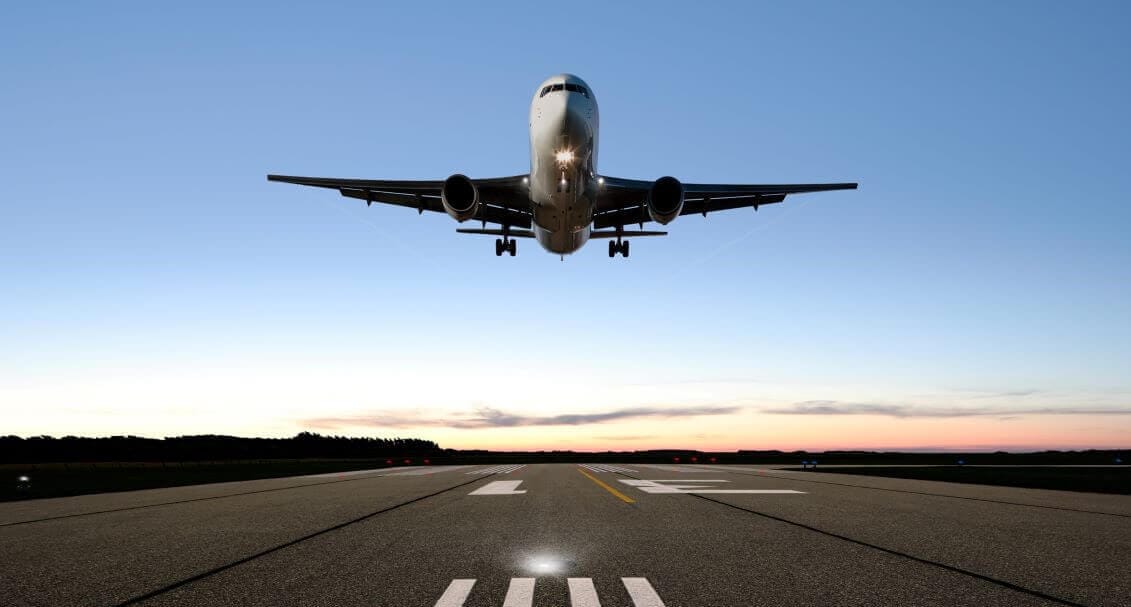
As passengers, we trust that airlines have essential medications and tools in their medical kits, in case of a health emergency. Doctors and nurses require these tools if called upon to assist. Unfortunately, they may not always be there.
In June 2022, I reported for Allergic Living on Dr. Andrea Merrill’s harrowing experience with an airplane emergency medical kit (or EMK) that turned out not to have a glucometer or epinephrine auto-injector or usable stethoscope. The surgeon tweeted about the situation, which prompted a huge outpouring from health professionals who had also faced issues with inadequate airplane EMKs.
What hasn’t been well-known is that Airlines for America, the U.S. airlines industry group, lobbied the Federal Aviation Administration for a long-term exemption from stocking required lifesaving medications in their EMKs. The exemption that was granted, covering five key drugs that include epinephrine vials, is meant for times of drug shortage.
When I interviewed Merrill, the status of those exemptions was unclear; they had been due to expire. But I’ve since learned that, in response to a request from Airlines for America, the FAA renewed the five drugs’ exemption – until 2024. There was no public input. The five drugs are: vials of epinephrine (in both cardiac and allergic concentrations), atropine (for heart rate), dextrose 50 (for hypoglycemia), and lidocaine (for heart rate and as an anesthetic).
Illinois Senator Tammy Duckworth has been working to have the FAA regularly review the contents of airline EMKs. She tells Allergic Living: “I’m disappointed the FAA quietly extended this exemption that never should have been granted in the first place. That’s one of the reasons I’m looking into legislative efforts that could help address this issue.”
Duckworth views medical kits on airplanes through the lens of public safety. “We expect our planes to have safety equipment like seatbelts when we travel, and there’s no reason consumers shouldn’t have the same expectation for lifesaving drugs,” she says.
A Fire with No Water
I also reached out to family medicine physician Dr. Mike Varshavski. “If medications are missing, you’re essentially leaving the medical professionals to battle a fire without water,” he said bluntly. Varshavski experienced this firsthand. In 2019, he stepped forward on a transatlantic flight to help a patient suffering anaphylaxis. He was shocked to find the plane’s medical kit only contained an epinephrine vial in the concentration for heart attacks.

If the EMKs are not stocked with the right medications, he says that as medical professionals, “we are left to improvise and guess what might be best for the affected passenger, instead of following tried and true medical guidelines.”
So if health professionals like Varshavski, Merrill and the many others who have been speaking out are concerned about the state of EMKs, why the exemption to 2024? I reached out to the FAA. They said: “The exemption recognizes that medication shortages can occur, and an exemption is appropriate in these situations.”
I relayed to the FAA that the Food and Drug Administration (FDA) confirmed to Allergic Living that epinephrine vials are no longer in shortage. The agency replied that airlines must stock these medications when they are available.
Yet, this raises more questions, such as who is checking the medical kits and when a drug supply issue ends, when are medical kits restocked? Who is responsible for determining if there’s a shortage, and is there oversight of this critical decision or are the airlines self-policing?
Rules on Medical Kits
Plus, how would a passenger or a physician know whether the drugs have or have not been refurbished in a particular plane’s emergency kit, as there is no way to access such information? The answer is, we simply don’t know.
Allergic Living turned to Dr. Paulo Alves, the global medical director of aviation health at MedAire, one of the EMK suppliers, for his insights. “Both the first-aid kits and EMKs are no-go items, meaning that an aircraft cannot take off if a required item is missing from the kit,” he said. This means if a plane does not have a required medication in its kit and the issue is a supply shortage, it can’t legally operate unless an exemption has been granted for that item.
Alves says once a kit has been opened, an airline is supposed to pick up a new one when they reach an airline hub. The opened one will go back to the supplier for updating. MedAire is one of several suppliers, and Alves says they have not had EMKs flying in the past few years without epinephrine vials.
Yet anecdotally, this has not been the case with all kits. Consider the experience of Varshavski, widely known as “Dr. Mike” on YouTube. The passenger he treated on that flight from New York to Tel Aviv was suffering first-time anaphylaxis and had no auto-injector. Since the EMK only had an epinephrine vial in the concentration for heart attacks, he had to troubleshoot. At the time he said, “Had I given him the full syringe, his heart could have stopped.”
Medical Kit Concerns Mount
Varshavski told me that “medical error rates substantially increase when complex calculations are needed to be performed in emergent situations.” Thankfully, he was able to adjust the dose on the Tel Aviv flight, and the passenger recovered. But will the next person be as fortunate?
There are many other examples:
• New York allergist Dr. Anna Nowak-Wegrzyn treated a passenger in distress in early 2021. She told me the medical kit was missing drugs and didn’t even have a blood pressure cuff. The EMK had a label stating: ‘No epi vials in the kit.’” It is unclear whether this related to the exemption or the need for a kit refreshment.
• In November 2021, Dr. Amish Shah spoke of an “eventful flight,” in which a passenger suffered a nut-allergic reaction. An emergency physician, Shah found the kit disorganized, and the pulse oximeter, which he needed, wasn’t working.
• Nurse Kellie Hopkins got a flight crew to call out to passengers for an epinephrine auto-injector in 2018, while assisting a 10-year-old having a severe allergic reaction. She did not feel she had time to look up the dosing for a child when using a vial.
• On a transatlantic flight, Houston allergist Dr. Patricia Leonard assisted a 4-year-old suffering a first-time severe reaction to cashew. Leonard found the medical kit a jumble. She saved the girl, who had recurring anaphylaxis, but it took too long to find the epinephrine. She has spoken out in favor of auto-injectors in EMKs.
Plane Kits Need to Mirror Reality
Why is the FAA moving at a glacial pace when it comes to re-evaluating the contents of kits? In 2020, the Aerospace Medical Association’s Air Transport Medicine Committee recommended an update of the medical kits to include epinephrine auto-injectors. The last FAA circular on this issue was back in 2006.
Between 2007 and 2016, the U.S. saw as a 377 percent increase in severe allergic reactions. Dr. Mike does not sugarcoat: “Epinephrine auto-injectors are crucial on flights, especially with the rising anaphylaxis rates and their ease of use in life or death situations.”
It is clear that, until auto-injectors are part of the standard equipment on planes, at a minimum vials of epinephrine at the correct concentration must be available. Duckworth notes that “no traveler should ever fear that an allergic reaction on a flight might go untreated because an airline received an unexplained exemption from carrying lifesaving medications.”
It is past time for the FAA to re-evaluate the contents of the kits and bring them into the 21st century. When you think about a transatlantic flight that can’t land while over ocean during a medical emergency, should that plane be able to take off without essential medications? Anaphylaxis, asthma, diabetes, and heart issues are such common conditions today. We should be helping the medical professionals who step forward to assist passengers and not, as Varshavski says, leaving them to fight fires without water.
Ask yourself: Is it right that you can buy a quality automatic blood pressure machine at any pharmacy while airlines offer physicians like Merrill a manual one in three pieces to assemble at 30,000 feet?
My husband is fond of the expression “Trust, but verify”. When it comes to emergency medical kits in the skies, I only wish that there was an authoritative body with the will and the ability to verify.
Lianne Mandelbaum is Allergic Living’s airlines correspondent, and the founder of NoNutTraveler.com.
Related Reading:
MD Ignites Debate: Why No Auto-Injectors, Other Drugs in Plane Medical Kits?
At 30,000 Feet, Why We Can’t Count on Epinephrine Vials on an Airplane
Lobby for In-Flight Auto-Injectors Gains Political and Celebrity Muscle





